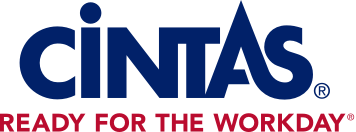Cintas Identifies Seven Strategies for Improving Personal Protection Equipment Performance
CINCINNATI - Jan. 15, 2014 - According to data from the Bureau of Labor Statistics (BLS), many workers who sustain on-the-job injuries admit to not wearing personal protective equipment (PPE). Often, workers believe PPE is uncomfortable, unnecessary or unavailable, and these attitudes can result in more serious injuries. For the national launch of its Cintas Safety Center, a PPE cabinet coupled with a managed program, Cintas Corporation (NASDAQ: CTAS), a leading provider of on-site first aid and safety products and training solutions, today identified seven strategies for improving PPE performance.
“PPE protects workers from a wide variety of job hazards and keeps organizations in compliance with safety regulations,” said Jay Bruscato, Vice President of First Aid and Safety, Cintas. “However, being over protected is just as hazardous as being under protected. Organizations should partner with a safety provider that can provide samples, help with PPE selection and ensure PPE best practices are followed.”
Seven recommendations for improving PPE performance include:
- Keep PPE in a central location –Organizations should invest in a PPE cabinet that keeps an adequate supply of high-quality head-to-toe solutions well organized and centrally located within the workplace. The cabinet should be part of a managed program with a safety provider so that organizations can easily adjust the type and amount of PPE delivered as employee count, job responsibilities and hazards change. A PPE program also ensures that protective equipment is always available and well-maintained to encourage proper use.
- Ensure ear plugs fit correctly and comfortably – Employees are less likely to wear hearing protection if it is uncomfortable. Organizations should have ear plugs available in various sizes and allow workers to get fitted to ensure that they fit properly and comfortably.
- Offer anti-fog eye protection – In high-humidity environments or when dealing with sudden environmental changes, eye protection can fog up, reducing visibility at crucial moments. Organizations should make sure anti-fog eye protection is part of their PPE inventory to reduce employees’ frustration and increase their use of protection in hazardous situations.
- Match gloves to hazards and seasons – Organizations need to have hand protection that is well matched with the tasks employees will be performing, the conditions of the work and the duration of use. Employees also need to use different gloves in the winter than in the summer. Safety managers will want to consider gloves made from leather, canvas and coated fabric, as well as options that are rubber-insulated and chemical and liquid-resistant.
- Check protective apparel for imperfections – Protective apparel keeps workers safe from electrical arc flashes that result in serious burns. Organizations should work with a safety provider that will regularly check the condition of protective apparel as it is restocked so that torn fabric on vests, tops and pants can be spotted before they are worn.
- Provide hard hats in a variety of types and classes – Different hard hats offer varying levels of protection. Organizations need to select from types that provide protection from blows to the top of the head (Type I) or the top and sides (Type II). Class G helmets can withstand 2,200 volts, Class E can withstand 20,000 volts and are ideal for electrical work, and Class C does not provide electrical insulation. Workers should know when to use each type and class.
- Offer safety training to supplement PPE use – Protective apparel and ear, eye, head and hand protection are only effective when the wearer is knowledgeable and responsible about the equipment. Employees should complete training courses that highlight job hazards, the importance of PPE and how to best wear it. Wearing too much PPE can cause heat stress, while not enough can lead to cold stress in certain conditions or exposure to hazards such as arc flash and hearing loss.
Cintas offers a variety of proactive and reactive safety solutions, from proactive PPE in the Cintas Safety Center to reactive AED and first-aid programs. For more information, visit www.cintas.com/safe.
About Cintas Corporation
Cintas Corporation helps more than one million businesses of all types and sizes get Ready™ to open their doors with confidence every day by providing a wide range of products and services that enhance our customers’ image and help keep their facilities and employees clean, safe and looking their best. With products and services including uniforms, mats, mops, restroom supplies, first aid and safety products, fire extinguishers and testing, and safety and compliance training, Cintas helps customers get Ready for the Workday®. Headquartered in Cincinnati, Cintas is a publicly held Fortune 500 company traded over the Nasdaq Global Select Market under the symbol CTAS and is a component of both the Standard & Poor’s 500 Index and Nasdaq-100 Index.
